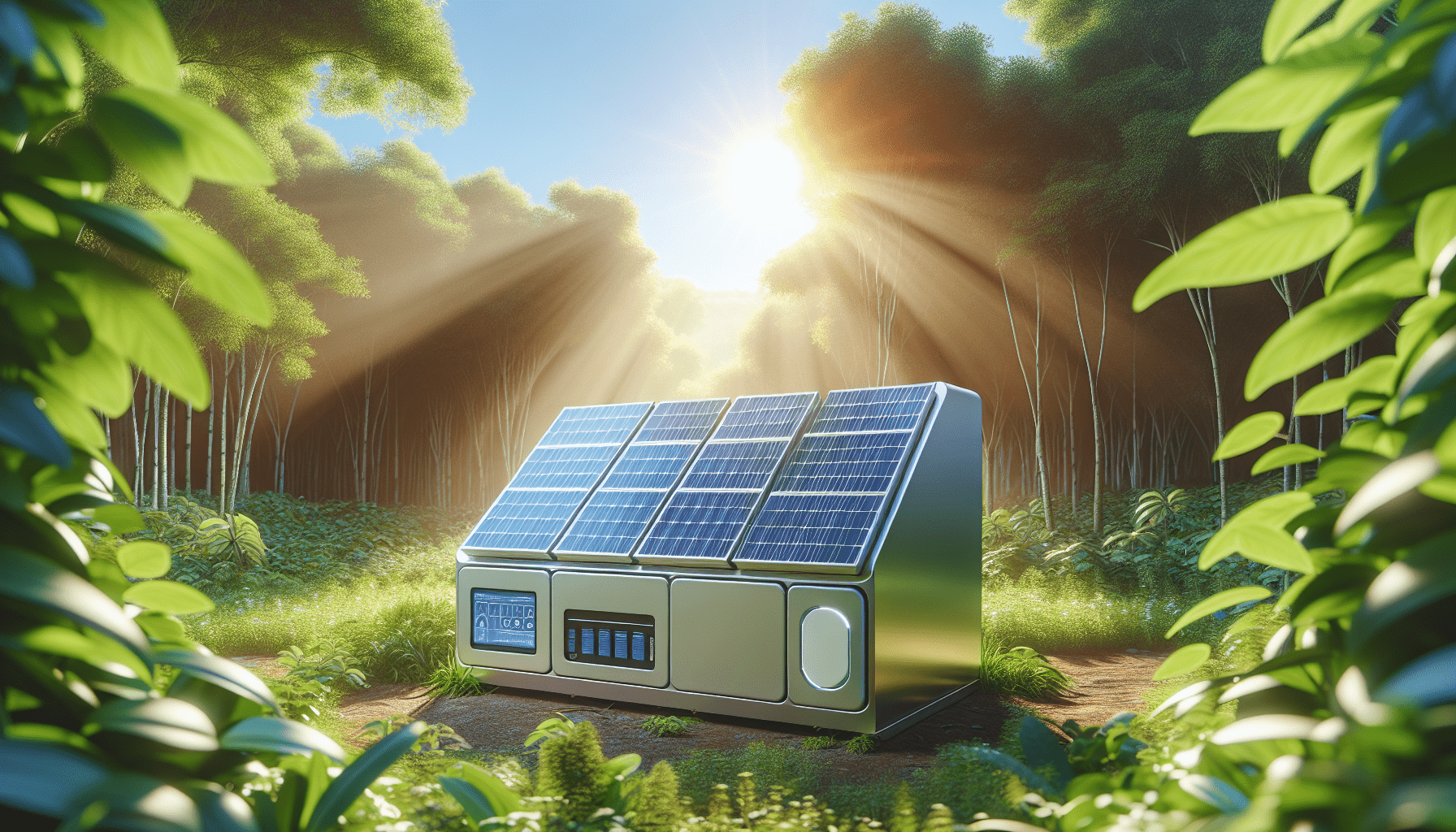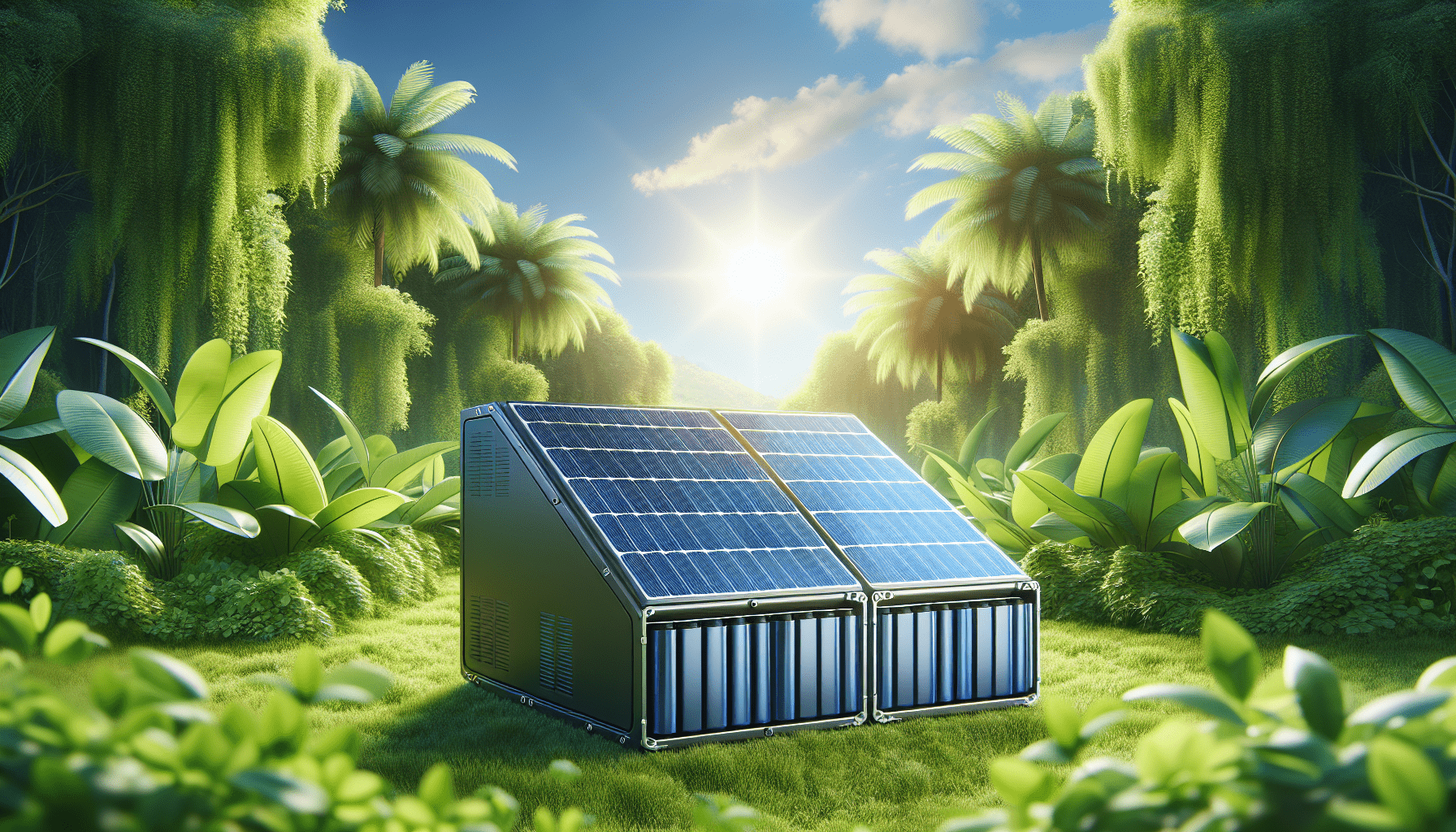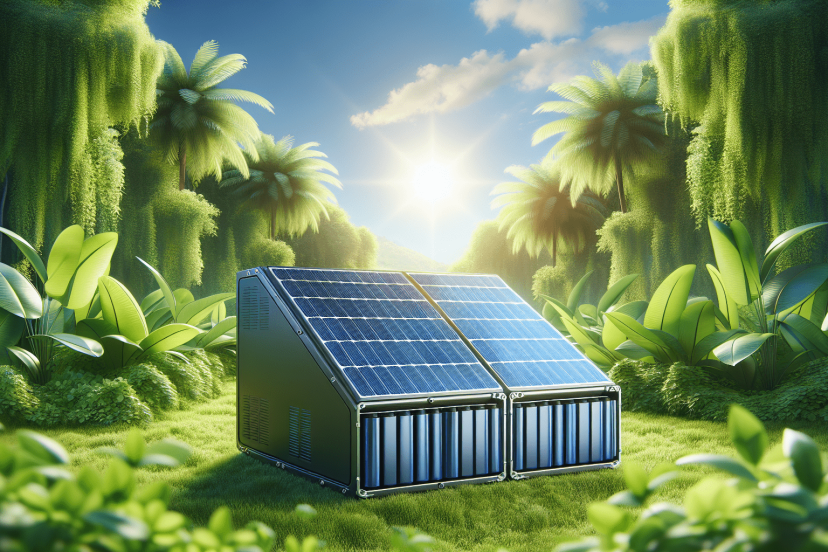Portable Solar Power Station: A Guide to On-the-Go Energy
As an Amazon Associate, I earn from qualifying purchases, at no additional cost to you. Disclaimer
Have you ever found yourself miles away from civilization, perhaps camping under the stars or working remotely in an awe-inspiring landscape, craving access to power? It’s times like these when knowing about portable solar power stations could be a game-changer for you.
Portable Solar Power Station: A Guide to On-the-Go Energy

Click Here to Go Solar and Save
Understanding Portable Solar Power Stations
Portable solar power stations are revolutionizing the way you can access energy when you’re on the move. Imagine combining the sustainability of solar power with the convenience of portability—this innovation bundles these benefits into compact units. They are especially beneficial for outdoor enthusiasts, those living in remote areas, or even during unexpected power outages.
What is a Portable Solar Power Station?
A portable solar power station is a device that harnesses solar energy and converts it into electrical power you can use to charge your electronic devices and power small appliances. These stations typically come equipped with a battery, inverter, and various ports for different types of connections. They are essentially compact, rechargeable sources of energy, allowing you to keep your gadgets running anywhere the sun shines.
Brief History and Evolution
The concept of harnessing solar energy isn’t new, but integrating it into portable devices has surged more recently. Advances in battery technology, specifically lithium-ion batteries, have been instrumental in this shift. Over the years, the size and efficiency of solar panels have improved drastically, making it more feasible to carry around these devices while still delivering substantial power.
Benefits of Using a Portable Solar Power Station
Besides enabling a nomadic lifestyle for tech-dependent adventurers, portable solar power stations offer several advantages:
- Eco-Friendly: They utilize clean energy, reducing your carbon footprint.
- Cost-Effective: Once purchased, sunlight is free. They offset energy costs associated with traditional power sources over time.
- Reliability: With advancements in technology, units have become highly reliable with extended lifecycles.
- Versatility: Suitable for a range of activities and environments, from camping trips to field research stations.
Key Components of a Portable Solar Power Station
Understanding the components of a solar power station can help you use and maintain these units more effectively. These components work together to ensure you have a seamless supply of power whenever you need it.
Solar Panels
Solar panels, or photovoltaic panels, are the primary component that captures sunlight and converts it into electricity. The efficiency of these panels is crucial, as it determines how quickly and effectively energy is converted and stored.
Battery
The battery is where the electricity generated by the solar panels is stored. Lithium-ion batteries are commonly used due to their efficiency and longevity. When choosing a portable power station, consider the battery capacity and how it aligns with your energy needs.
Inverter
The inverter is responsible for converting the stored energy into a form that can be used by your devices. Many inverters can convert direct current (DC) to alternating current (AC), crucial for charging most household electronics.
Charge Controller
The charge controller regulates the voltage and current coming from the solar panels, keeping the battery from overcharging. This component enhances the efficiency and longevity of the battery.
Ports and Outlets
A variety of ports, such as USB, AC outlet, and DC carports, offer flexibility in what gadgets you can charge. The more port types and quantities available, the more versatile your power station will be.
Click Here to Use Clean Energy for a Sustainable Future
Choosing the Right Portable Solar Power Station
When it comes to selecting the ideal unit, several factors should guide your decision. Carefully considering these aspects will ensure you get the best portable solar power station for your specific needs.
Power Needs Assessment
Understanding your power needs is akin to knowing what makes you tick. Start by listing the devices or appliances you wish to power and their respective energy requirements. This will help you determine the wattage capacity needed in a solar power station.
Battery Capacity and Type
Battery capacity, measured in watt-hours (Wh), will denote how long the power station can keep running your devices. Read reviews and find out the lifecycle of the batteries included, as this will impact longevity and performance.
Portability and Weight
Since you’ll be on the move, portability is crucial. Look for a unit that’s lightweight yet robust enough to handle your activities. Some units may even feature wheels for easier transportation.
| Feature | Description |
|---|---|
| Weight | How heavy is the unit? Portable designs are often under 20 lbs. |
| Size | Compact sizes are easier to handle and store. |
| Design | Handles or wheels for easier transportation? |
Solar Panel Efficiency
Higher efficiency panels will generate more power in less time. This is crucial in environments with limited sunlight exposure. Pay attention to the panel’s power ratings and energy conversion efficiency.
Price vs. Performance
While cost is always a consideration, balance it against performance and features. Sometimes investing a bit more up front results in a more versatile, durable, and efficient unit.
How to Use a Portable Solar Power Station
Using a portable solar power station is straightforward once you understand the fundamental steps involved. Let’s break it down so you can maximize your power station’s performance.
Initial Setup
- Read the Manual: Yes, really! Each model may have unique features and specifications.
- Charge Your Battery: If possible, fully charge the battery via a wall outlet before your trip for optimal performance.
- Solar Panel Placement: Position the solar panels to directly face the sun for maximal sunlight capture. Setting up at an angle may help optimize energy collection throughout the day.
Charging Devices
- Connect Devices: Utilize the correct ports for your gadgets, whether it’s USB or an AC plug.
- Monitor Usage: Keep an eye on the power station’s remaining capacity so you can plan recharging sessions accordingly.
Maintenance Tips
- Regular Checks: Examine for any physical damage, especially in the wiring and panels.
- Battery Care: Charge your battery at least every 3-6 months if not in use, keeping it in a state of readiness.
- Clean Your Panels: Dust and debris can impede efficiency; clean regularly using a soft cloth.

Click Here to Take Control of Your Energy Needs
Applications and Scenarios
Portable solar power stations are versatile and can be used in various scenarios. Whether you’re an avid adventurer or someone preparing for emergencies, here are a few applications you might find meaningful.
Outdoor Activities
- Camping: Power your lights, mobile devices, or even a small fridge to keep food fresh.
- Fishing Trips: Charge fish finders or electronic devices while you’re on the water.
Emergency Situations
In the event of a natural disaster or a power outage, a portable solar power station ensures that critical devices such as medical equipment or communication devices remain operational.
Remote Work
For digital nomads or professionals working in remote areas, having a reliable power source is essential. A portable solar power station can keep laptops and other essential technology charged.
Future Trends
The world of portable solar power stations is continuously evolving, with new technologies making the devices more efficient and compact.
Integration with Smart Technology
Future stations might feature more connectivity with smart home systems, offering real-time monitoring and adjustments via your smartphone.
Increased Efficiency
Ongoing research in photovoltaic technology is set to increase solar panel efficiency even further, providing greater energy conversion rates.
Compact and Lightweight Designs
Innovations in material sciences and battery technology will likely yield more lightweight and compact designs, enhancing portability without sacrificing performance.
Conclusion
Incorporating a portable solar power station into your toolset for travel, work, or disaster preparedness, means you’ll never be in the dark again. As technology advances and becomes even more accessible, these eco-friendly solutions will only become more essential and advantageous. Whether powering your travels through the rugged outdoors or ensuring you’re prepared for anything life throws your way, the freedom of on-the-go energy is a luxury that’s now within your reach. So, why wait to experience the convenience of having power anywhere, anytime?

